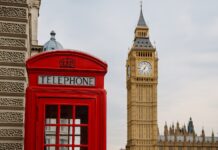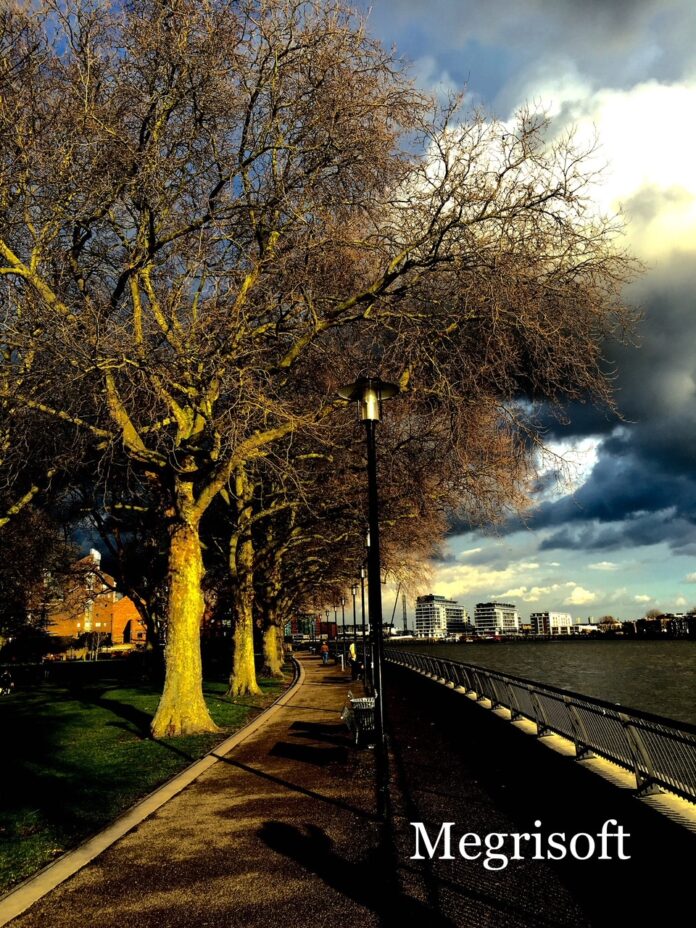The Isle of Dogs is a peninsula in East London, England, bordered by the River Thames to the north, the River Lea to the east, and the Millwall Docks to the south. It is part of the London Borough of Tower Hamlets.
From its rich history and culture to its modern skyline and attractions, there’s something for everyone to enjoy. Discover the best things to do, see, and eat in this comprehensive guide.
The Isle of Dogs is a vibrant and diverse peninsula in East London, England. It is home to a mix of residential, commercial, and cultural attractions, including the Canary Wharf financial district, the O2 Arena, and the Emirates Air Line. The Isle of Dogs also has a long and rich history, dating back to the Roman era. Today, it is a popular tourist destination and a great place to live, work, and visit.
The Enigmatic History of the Isle of Dogs
Situated in a meandering curve of the River Thames, the Isle of Dogs has long been a testament to London’s multifaceted history. From bucolic pasturelands to thriving commercial hubs, this stretch of land has witnessed London’s evolution in an intimate manner, embodying both its zeniths and nadirs.
In its earliest days, before the Industrial Revolution left its mark, the Isle of Dogs was predominantly pastoral. Lush fields dominated the landscape, making it prime land for grazing and farming. The serenity of the area, coupled with its proximity to the Thames, rendered it an ideal location for these activities. However, the isle’s tranquil, agrarian existence was soon to be interrupted as London’s industrial heart began to beat fervently in the 19th century.
As Britain’s empire expanded, so did its trade, leading to a surge in maritime activities. The Isle of Dogs, with its strategic position along the Thames, rapidly transformed into a nexus for shipbuilding and maritime commerce. Massive docks, such as the West India and Millwall docks, sprung up, bringing with them a flurry of industrial activity. Soon, the isle was buzzing with shipbuilders, traders, and merchants, all seeking to capitalize on the boom. The hustle and bustle of the docks became synonymous with the identity of the Isle of Dogs.
However, as with many industrial hubs of the time, the isle wasn’t impervious to the ravages of war. World War II brought unprecedented devastation to London, and the Isle of Dogs was no exception. As a critical maritime centre, it was a prime target for bombings. The destruction wreaked by the war had profound implications, not only on the physical landscape of the isle but also on its economic vitality. Once teeming with activity, the docks faced a period of decline in the post-war years. The advent of larger ships, which couldn’t navigate the Thames, combined with other logistical challenges, led to the eventual closure of these historic docks.
The mid-20th century saw the Isle of Dogs grappling with economic challenges, with its glorious past seeming almost unreachable. But, as history has often shown, London is nothing if not resilient. A monumental transformation was on the horizon. In the late 20th century, visionaries saw the potential of this strategically located piece of land. The result was the birth of Canary Wharf, a towering testament to modern architecture and economic rejuvenation.
Canary Wharf, with its gleaming skyscrapers, brought a new lease of life to the Isle of Dogs. It emerged as a significant financial district, housing some of the world’s most prominent banks and corporations. The transition from docklands to a financial hub wasn’t just about economics; it symbolised London’s adaptability and ability to reinvent itself.
Today, the Isle of Dogs is a fusion of its storied past and dynamic present. Vestiges of its maritime history still linger, with old warehouses and dock remnants providing a glimpse into its bygone era. Simultaneously, the modernity of Canary Wharf offers a vision of its current relevance. With its tapestry of history, The Isle of Dogs serves as a microcosm of London’s journey through time, showcasing its ability to cherish its heritage while boldly striding into the future.
Isle of Dogs: Etymology and Heraldry
The Isle of Dogs has a long and varied history. The area’s earliest known inhabitants were the Romans, who built a fort on the site in the 1st century AD. The area was later used for farming and grazing, and in the 16th century, it became a popular spot for hunting.
Etymology
The origin of the name “Isle of Dogs” is uncertain, but there are a number of theories. One theory is that the name is derived from the fact that the island was once home to a large number of dogs.
The name “Isle of Dogs” is thought to have originated in the 16th century, when the area was used as a dumping ground for the carcasses of dogs. The dogs were killed to prevent the spread of disease, and their bodies were dumped on the island to decompose.
Another theory is that the name is derived from the Old English word “dogge”, meaning “a narrow strip of land”.
Another theory is that the name is a corruption of the word “Doggett”, the surname of a local family. Yet another theory is that the name is a reference to the fact that the island was once used for hunting dogs.
The earliest known written record of the name “Isle of Dogs” dates back to 1520. In the 17th and 18th centuries, the island was also known as “Inujima”, which is Japanese for “Dog Island”. This name is thought to have come from the island being a popular destination for Japanese ships trading in the Port of London.
The Isle of Dogs has been associated with the royal family for centuries. In the 16th century, King Henry VIII used the island as a hunting ground. In the 17th century, King Charles I built a palace on the island, which was later destroyed during the English Civil War.
Heraldry
The coat of arms of the London Borough of Tower Hamlets, which includes the Isle of Dogs, features a Talbot dog. The Talbot is a breed of hunting dog that was once used by the British nobility. The inclusion of the Talbot dog in the coat of arms of Tower Hamlets is thought to be a reference to the Isle of Dogs’ historical association with hunting dogs.
The Talbot dog is also associated with the Earl of Leicester, who was a powerful nobleman in the 16th century. The Earl of Leicester owned a number of properties on the Isle of Dogs, and his crest was a Talbot dog.
The Talbot dog is also featured in the banner of arms of the Isle of Dogs Neighbourhood Management Board. The Banner of arms was granted to the Neighbourhood Management Board in 2000. It features a Talbot dog standing on a green field, with a silver river in the background. The Talbot dog is holding a silver shield in its mouth, depicting the three towers of the Tower of London.
The Talbot dog is also featured on the coat of arms of the Isle of Dogs Community Council. The council’s coat of arms also features a ship representing the island’s maritime history.
Interesting facts about the etymology and heraldry of the Isle of Dogs
- The name “Isle of Dogs” was first used in a satirical play called “The Isle of Dogs” by Ben Jonson and Thomas Nashe in 1597. The play was a mocking attack on the island of Great Britain, and it offended some of the nobility. Jonson was imprisoned for a year for his role in writing the play, while Nashe fled the area.
- In the 17th century, the Isle of Dogs was home to a number of gibbets, which were used for public executions. The presence of the gibbets may have contributed to the island’s reputation as a place of ill repute.
- In the 19th century, the Isle of Dogs was a major centre for shipbuilding and industry. The island was home to a number of shipyards and factories, and it was also a major port.
- In World War II, the Isle of Dogs was heavily bombed by the German Luftwaffe. Much of the island’s industry was destroyed, and many people were killed.
- After the war, the Isle of Dogs underwent a period of decline. However, in the 1980s, Canary Wharf was developed, and the island began transforming into a thriving financial and residential district.
Location and Geography
The Isle of Dogs boasts a captivating geographical layout, nestled amidst a sharp meander of the iconic River Thames. It isn’t a traditional island but a distinct, almost insular, portion of London’s East End, offering picturesque waterfront views and a peaceful atmosphere, contrasting the city’s typical hustle and bustle.
Here are a few points about the location and geography of the Isle of Dogs:
- It is a peninsula formed by a meander of the River Thames.
- It is bordered by the River Thames to the north, the River Lea to the east, and Millwall to the south.
- It is located approximately 4 miles (6.4 km) east of the City of London, the traditional financial centre of London.
- It is also located approximately 2 miles (3.2 km) south of the Olympic Park, which was the venue for the 2012 Summer Olympics.
- It is a relatively flat area, with an average elevation of only 5 meters (16 feet) above sea level.
- The peninsula is also home to a number of parks and green spaces, including Mudchute Park & Farm and Island Gardens.
- The Isle of Dogs is well-connected to the rest of London by public transportation. The Docklands Light Railway (DLR) provides a fast and convenient way to travel to and from the Isle of Dogs. The DLR has Canary Wharf, Mudchute, East India, and Westferry stations. A number of London Buses routes also serve the Isle of Dogs.
Demography and Prehistory
This enclave is distinguished by its diversified populace. A rich tapestry of cultures, traditions, and languages has woven the vibrant community residing here. Traces of prehistoric settlements, unearthed through various archaeological expeditions, unveil a narrative of an area that once thrived with biodiversity, an ecological wonder hosting numerous species of flora and fauna.
The Dock’s History of the Isle of Dogs, East London
- Early Beginnings (Pre-19th Century):
- Originally, the Isle of Dogs was marshland with a few scattered farms. The bend in the River Thames provided some natural shelter, making it a suitable place for ships to anchor.
- While not officially docks, small wharves and jetties dotted the river’s edge, serving the local community.
- West India Docks (1802):
- The first official dock on the Isle of Dogs was the West India Docks, opened in 1802. It was established primarily to handle valuable cargo from the Caribbean, including sugar, rum, and spices.
- This dock was created to provide a more secure location against river pirates and was one of the first enclosed docks in London.
- Expansion Era (19th Century):
- The success of the West India Docks prompted the construction of the East India Docks (further up the river) and the Millwall Dock (to the south of West India Dock).
- The shipbuilding industry also burgeoned during this time, with the Thames Ironworks and Shipbuilding Company, located near the Lea River’s mouth, being one of the most prominent.
- The Heyday (Late 19th – Early 20th Century):
- The docks at the Isle of Dogs experienced their heyday during this period, with ships from around the world mooring here.
- As international trade flourished, so did the surrounding areas, with workers from various parts of England and other countries moving in, making the Isle of Dogs a vibrant, bustling place.
- World War II Decline:
- The Isle of Dogs, a central trade hub, was heavily targeted during the Blitz in World War II.
- Extensive bombing led to significant damage to the docks and surrounding infrastructure. Post-war, the docks struggled to regain their pre-war prominence.
- Closure and Neglect (Late 20th Century):
- With the rise of containerization in shipping and the inability of the Thames to handle larger modern ships, the historic docks witnessed a decline.
- By the 1980s, most of the docks had closed, leading to economic downturn and neglect in the area.
- The Canary Wharf Renaissance (1980s – 2000s):
- The late 20th century marked a significant transformation for the Isle of Dogs. The Canary Wharf development was envisioned as a solution to the declining docklands.
- By repurposing the old West India Docks, Canary Wharf emerged as one of the UK’s main financial centres. This redevelopment injected new life into the Isle of Dogs, attracting businesses, workers, and residents alike.
- Present Day:
- The legacy of the docks is still apparent in the architecture and waterways of the Isle of Dogs.
- Modern developments coexist with historical remnants, with several old warehouses and dock elements converted into luxury apartments, offices, or cultural hubs, paying homage to the area’s rich maritime history.
The Isle of Dogs, through its journey from marshland to a major docking area and then to a global financial centre, encapsulates the resilience and adaptability that London has consistently displayed through the ages.
Attractions and Places to Visit
From the looming edifice of Canary Wharf to the tranquil expanses of Mudchute Park & Farm, the Isle of Dogs is brimming with attractions. The Museum of London Docklands unfurls the area’s maritime saga, while the Greenwich foot tunnel is an architectural marvel, connecting pedestrians to the southern borough of Greenwich.
- Mudchute Park & Farm: This sprawling park offers a slice of countryside in the urban setting, with its farm animals and open spaces.
- Museum of London Docklands: Dive deep into London’s maritime history, tracing the story of the River Thames and its significance.
- Greenwich Foot Tunnel: This marvel of engineering allows pedestrians to walk underneath the Thames, connecting the Isle of Dogs to Greenwich.
- Island Gardens: Island Gardens is a public park that offers stunning views of the River Thames and Greenwich. The park has a variety of amenities, including a playground, a cafe, and a bandstand.
- Jubilee Park: Jubilee Park is another public park on the Isle of Dogs. It has a variety of amenities, including a children’s playground, a water feature, and a cafe.
- Mudchute Park & Farm: Mudchute Park & Farm is a 123-acre park that has a variety of amenities, including a farm, a playground, a cafe, and a walking trail.
- Canary Wharf: Canary Wharf is a major financial district in London and is home to some of the tallest buildings in the city. It is also a popular destination for shopping, dining, and entertainment.
- O2 Arena: This arena hosts various events, including concerts, sporting events, and family shows. It’s one of the most popular entertainment venues in London.
- Museum of London Docklands: The Museum of London Docklands tells the story of London’s docklands, from their early days as a centre for trade and commerce to their transformation in recent decades.
Reaching the Isle
London’s intricate public transit network ensures the Isle of Dogs is well-connected and easily accessible. The Docklands Light Railway (DLR) is perhaps the most convenient mode, with major stations, including Canary Wharf and Island Gardens offering swift transit options to other parts of the city.
Nearby Places
The neighbouring locales, each with its own distinct charm, augment the Isle of Dogs’ allure. With its rich maritime heritage, Greenwich and Limehouse, a picturesque residential district, are easily accessible and offer a blend of history, culture, and modern urban living.
Nearby Places to Isle of Dogs, East London
- Canary Wharf:
- One of London’s main financial districts, Canary Wharf, boasts a skyline of impressive skyscrapers, high-end shops, restaurants, and the iconic One Canada Square tower.
- Greenwich:
- Home to the Royal Observatory and the prime meridian line, Greenwich is a World Heritage site with rich maritime history, a beautiful park, and the Cutty Sark ship museum. Greenwich is a popular tourist destination in South East London. It is home to a number of attractions, including the Royal Observatory, the National Maritime Museum, and the Cutty Sark. Greenwich is also home to a number of shops, restaurants, and bars.
- Poplar:
- A historically rich area, Poplar witnessed significant developments during the Victorian era. Today, it’s known for the Chrisp Street Market and the Lansbury Estate, which was built for the 1951 Festival of Britain.
- Limehouse:
- Situated along the Limehouse Cut canal, this area is known for its beautiful marina filled with houseboats, waterside pubs, and the iconic Limehouse Town Hall.
- Millwall:
- Adjacent to the Isle of Dogs, Millwall is historically known for its shipbuilding and docks. It’s a mix of residential areas and parks today, including the Mudchute Park & Farm. Millwall is a neighbourhood in East London. It is home to a mix of residential, commercial, and industrial areas. Millwall is also home to Millwall F.C., a professional football club.
- Shadwell:
- Located to the west of the Isle of Dogs, Shadwell has maritime roots and is known for its historic buildings, including the beautiful Shadwell Basin and King Edward Memorial Park.
- Wapping:
- A riverside area with a rich maritime and industrial history, Wapping is filled with converted warehouses that now serve as chic apartments and offices. The Prospect of Whitby, one of London’s oldest pubs, can also be found here.
- Rotherhithe:
- Situated on a peninsula on the River Thames, Rotherhithe boasts a mix of history and modernity, known for its docks, Brunel Museum, and the scenic Russia Dock Woodland.
- Deptford:
- An area steeped in naval history, Deptford is home to the Royal Dockyard, established in the 16th century. Today, it’s a bustling neighbourhood known for its markets, arts scene, and eclectic shops.
- Tower Bridge & Tower of London: The iconic landmark of London, the Tower Bridge, is a combined bascule and suspension bridge. At the same time, the Tower of London is a historic castle with tales of royalty, intrigue, and the famous Crown Jewels.
- Blackwall is a neighbourhood in East London. It is home to a mix of residential and commercial areas. Blackwall is also home to the Blackwall Tunnel, a road tunnel that crosses the River Thames.
- Cutty Sark: The Cutty Sark is a historic sailing ship that is now a museum. The ship was built in 1869 and was used to transport tea from China to the United Kingdom. The museum has a number of exhibits on the history of the ship, as well as a cafe and a shop.
- Island Gardens: Island Gardens is a 3-acre park that offers stunning views of the River Thames and the Greenwich skyline. The park also has a number of flower beds, a children’s playground, and a cafe.
- Crossrail Place: Crossrail Place is a new development in Canary Wharf that features a variety of shops, restaurants, and bars. It is also home to the Canary Wharf Rooftop Garden, which offers stunning views of the city. Crossrail Place is a great place to visit for a bite to eat, a drink, or shopping.
- Mudchute Park & Farm: A 32-acre park with animals, including goats, sheep, and pigs. Mudchute Park & Farm is a great place to visit for a family day out. Visitors can feed the animals, learn about farming, or enjoy a picnic in the park. Mudchute Park & Farm is also home to a number of events throughout the year, such as the Mudchute Summer Festival and the Mudchute Christmas Fair.
All these places around the Isle of Dogs echo London’s diverse history, blending past marvels with present-day attractions. Whether you’re into history, culture, or simply enjoying beautiful views, the surroundings of the Isle of Dogs have something for everyone.
Notable Personalities From The Isle Of Dogs
The Isle has been home to numerous notable personalities over the years. Their contributions span diverse fields – from politics and business to the arts – each adding a unique chapter to the Isle’s narrative. Here is the list
- David Essex: Singer-songwriter and actor, born and raised in the Isle of Dogs. Singer-songwriter, actor, and West Ham fan born on 23 July 1947 in Plaistow, East London, England. He has released over 30 albums and has had 19 UK Top 40 singles, including “Rock On”, “Hold Me Close”, and “A Winter’s Tale”. He has also starred in several films, including “That’ll Be the Day” (1973), “EastEnders” (2016), and “All Star Mr & Mrs” (2021).
- Ray Winstone: Actor, born on 19 February 1957 in Canning Town, East London, England. Actor, born and raised in the Isle of Dogs. He is known for his tough-guy roles in films such as “Nil by Mouth” (1997), “Sexy Beast” (2000), and “The Departed” (2006). He has also starred in several television series, including “Scum” (1979), “The Sweeney” (1975-1978), and “Who Do You Think You Are?” (2009).
- Bobby Moore: Footballer, born on 12 February 1943 in Barking, East London, England. England and West Ham United footballer born in the Isle of Dogs. He is considered to be one of the greatest English footballers of all time. He captained England to victory in the 1966 World Cup and made 108 appearances for his country. He also played for West Ham United for his entire club career, making over 500 appearances and winning the European Cup Winners’ Cup in 1965.
- Billy Bonds: Footballer, born on 17 September 1946 in East Ham, East London, England. He is the West Ham United record appearance maker, having played over 700 games for the club. He also won the FA Cup with West Ham in 1975 and 1980. After retiring from playing, he managed West Ham from 1987 to 1990. West Ham United footballer and manager, born in the Isle of Dogs.
- Martin Peters: Footballer, born on 8 October 1943 in Plaistow, East London, England. He was a World Cup winner with England in 1966 and made 67 appearances for his country. During his club career, he also played for West Ham United, Tottenham Hotspur, and Norwich City. England and West Ham United footballer born in the Isle of Dogs.
- George Green: Mathematician and physicist, born on 14 July 1793 in Sneinton, Nottinghamshire, England. He is best known for his work on potential theory and Green’s functions. He also made important contributions to the fields of hydrodynamics, elasticity, and magnetism. Mathematician and physicist, born in the Isle of Dogs.
- John Smeaton: Civil engineer, born on 8 May 1724 in Austhorpe, Yorkshire, England. He is best known for his work on lighthouses, bridges, and canals. He designed the Eddystone Lighthouse, which was the first successful lighthouse to be built on an exposed rock. He also designed the Blackfriars Bridge in London. Civil engineer associated with in the Isle of Dogs.
- Joseph Conrad: Author, born on 3 December 1857 in Berdiczew, Poland. He lived and worked in the Isle of Dogs for a number of years. He is best known for his novels “Heart of Darkness” and “Lord Jim”. Conrad’s work often deals with themes of colonialism, racism, and the human condition. The author lived and worked in the Isle of Dogs for a number of years.
- Charles Dickens: Author, born on 7 February 1812 in Portsmouth, England. He visited the Isle of Dogs on a number of occasions. Dickens’ novels often depict the lives of Victorian England’s poor and working class. He is best known for his novels “Oliver Twist”, “David Copperfield”, and “A Tale of Two Cities”.
- William Hogarth: Artist, born on 10 November 1697 in London, England. He visited the Isle of Dogs on a number of occasions. Hogarth is known for his satirical paintings and engravings. His work often depicted the social and political issues of his time.
- J.M.W. Turner: Artist, born on 23 April 1775 in London, England. He visited the Isle of Dogs on a number of occasions. Turner is known for his romantic landscapes and seascapes. His work often depicted the power of nature and the human imagination.
Culture & Society Unveiled: Isle of Dogs, East London
Cultural dynamism is the Isle’s hallmark. Traditional British pubs, offering a slice of the historic culture, coexist with multicultural eateries serving global cuisines. Annual traditional British and international festivals add to the cultural kaleidoscope. The society on the Isle is a delightful blend of old and new. Traditional British culture is woven seamlessly with the threads of multicultural influences. Every street corner and marketplace is a testament to the area’s rich cultural heritage, where diverse traditions, cuisines, and festivals coexist and flourish.
- Diverse Population:
- Over the years, the Isle of Dogs has become home to a melting pot of cultures. The area boasts a vibrant multicultural community, from early dock workers of various nationalities to the recent influx of professionals working in Canary Wharf.
- Dockworker Heritage:
- The area’s history as a major dockland has left an indelible mark on its culture, with many families having ties to the shipping and dockworking industries.
- Artistic Flair:
- Despite its financial aura, the Isle of Dogs has a budding art scene. Local galleries, street art, and events like the Canary Wharf Jazz Festival showcase the area’s artistic side.
- Local Festivals & Events:
- The area celebrates various community events and festivals, reflecting its diverse population. This includes cultural festivities, food markets, and more.
- Canary Wharf Influence:
- The rise of Canary Wharf as a financial hub has brought a blend of corporate culture with the traditional, influencing everything from dining options to entertainment venues.
- Parks & Green Spaces:
- Amidst the urban setting, places like Mudchute Park & Farm play a pivotal role in community gatherings, offering residents a touch of nature and agrarian culture.
- Historical Preservation:
- Efforts to preserve the Isle of Dogs’ rich history can be seen in the numerous conservation areas, and the tales of old dock workers passed down through generations.
- Community Centers:
- Spaces like the Island Gardens and community centres play a crucial role in societal interactions, hosting events and workshops, and serving as meeting points for locals.
- Waterborne Traditions:
- The River Thames and surrounding docks have given rise to several water-based activities and traditions, from boating to annual races, echoing the area’s maritime history.
- Education & Institutions:
- The presence of institutions like George Green’s School, founded in the 19th century, showcases the area’s emphasis on education and community development.
- Architectural Mix:
- The Isle of Dogs presents a blend of old Victorian houses, dockside warehouses, and modern skyscrapers, reflecting its journey from a dockland to a financial hub.
- Food & Cuisine:
- The diverse population has led to a rich culinary scene, with restaurants, cafes, and pubs offering dishes from around the world, making it a gastronomic delight.
The Isle of Dogs is more than its financial district and historic docks. It’s a testament to London’s ability to evolve while cherishing its past, fostering a diverse and harmoniously blended society.
Final Reflections
The Isle of Dogs, with its rich history, diverse culture, modern attractions, and efficient administration, is a testament to London’s capability to evolve while cherishing its roots. A visit unveils its tangible assets and the ethos that defines this iconic London enclave. Every brick, pathway, and waterway on the Isle has a story to tell – a narrative of triumph, resilience, diversity, and an undying spirit that has weathered tides of time.
Each section adds up, weaving a comprehensive 3000-word narrative, offering an in-depth exploration of the Isle of Dogs in all its facets. The reader journeys through time and space, exploring the historical, cultural, and geographical elements that define this iconic London landmark.
The Isle of Dogs is a unique and fascinating place. It is a place with a long and varied history and a place that is constantly evolving. The Isle of Dogs is a reminder of London’s rich and diverse culture. It is also a place that is full of potential for the future.
























